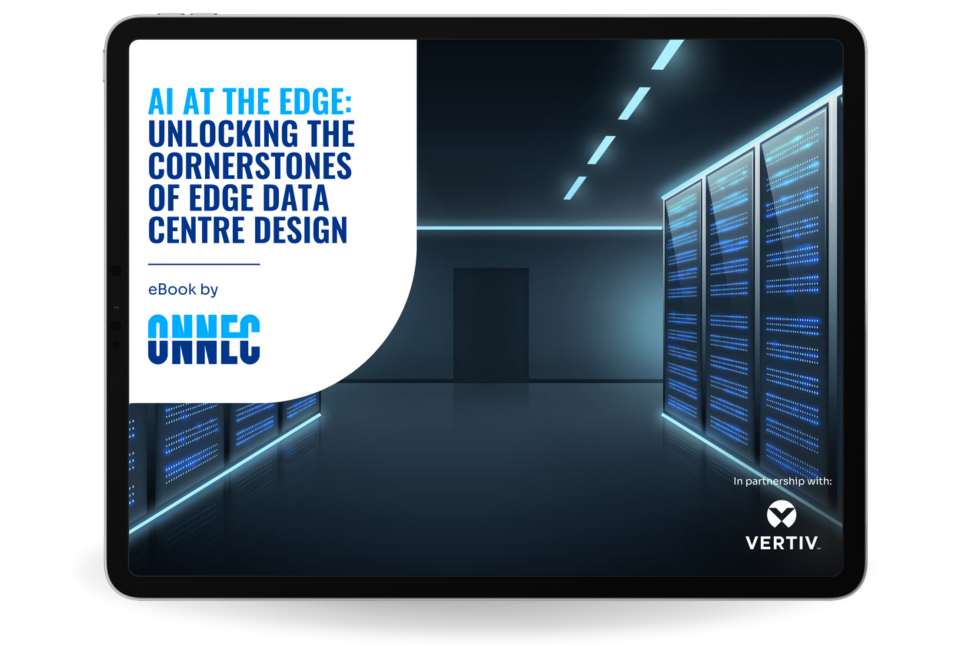
Unlocking the Future: Holistic Design Principles for Edge Data Centres
AI is transforming industries at an unprecedented pace, but this revolution is only possible with the right infrastructure in place. As demand for AI-driven services surges, organisations must rethink their approach to data centre design to ensure their infrastructure can support the next generation of workloads. Edge computing data centres could help bridge a significant supply gap.
However, building Edge data centres that are fit for purpose isn’t straightforward. Operators must overcome significant challenges in power, cooling and cabling. Failure to take a holistic approach to these elements risks inefficiencies, higher costs and performance limitations that throttle AI success.
The Growing Strain on Data Centres
Demand for AI-ready data centres is skyrocketing. According to McKinsey, global annual demand for data centre capacity could rise by 22% from 2023-2030, reaching 219 gigawatts (GW) annually. AI could account for 70% of total demand by 2030. However, supply isn’t keeping pace, leading to concerns over capacity shortages that limit AI development.
To address this, Edge computing is emerging as a potential solution. By processing data closer to the source, Edge data centres reduce latency, improve security and enhance efficiency across industries. Yet to ensure these facilities can support the demands of the new AI age, operators must consider the three cornerstones of data centre design simultaneously: power, cooling and cabling.
These elements are closely interconnected. Managing cable congestion is particularly crucial, as high- cables for AI workloads generate substantial heat that can affect connectivity. As a result, cooling must be carefully, considered, with data centre teams exploring all options to keep hardware and data halls cool. Meanwhile, edge facility managers must also enhance power delivery efficiency to boost sustainability, reduce costs, and minimise the strain on local power grids.
The Six Holistic Design Principles for Edge Data Centres
However, building Edge data centres that are fit for purpose isn’t straightforward. Operators must take a holistic approach to data centre design to ensure long-term efficiency, scalability, and resilience. Here are six key principles to consider:
1. Define and understand IT load
Assessing AI computing needs is essential for efficient Edge data centre planning. Understanding IT load helps optimise power, cooling and cabling, ensuring scalability without excessive retrofitting.
2. Location, location, location
Strategic site selection impacts efficiency, sustainability and compliance. While major hubs remain key, emerging regions like Spain and the Nordics offer renewable energy and favourable AI conditions.
3. Compliance with regulations
Meeting evolving energy and sustainability regulations is crucial. Stricter efficiency targets – such as Germany’s mandated 1.3 PUE by 2027 – means designing for compliance could prevent costly retrofits.
4. Standardisation for scalability
Standardising power, cooling and cabling solutions speeds up deployments and ensures consistency. AI-driven workloads require repeatable designs that enhance efficiency and interoperability across locations.
5. Resource reuse and sustainability
Sustainable Edge data centres integrate renewables, optimise energy use and repurpose waste heat or water for cooling. These strategies reduce costs while aligning with global environmental goals.
6. Cabling as a future-proofing strategy
Structured, high-quality cabling ensures seamless connectivity, minimises maintenance issues and supports evolving AI infrastructure needs.
As AI continues to shape the digital economy, Edge data centres have a role to play in enabling its success. However, unlocking the full potential of AI at the Edge requires a strategic approach to infrastructure design; one that considers power, cooling and cabling as interconnected elements rather than isolated challenges.
To navigate this complexity, operators need trusted partners who can provide the expertise, technology and strategic guidance required to build and scale AI-ready infrastructure. By embracing holistic design principles and leveraging the right partnerships, organisations can create resilient and future-proof Edge data centres that support AI innovation for years to come.
Want to learn more about overcoming infrastructure challenges in AI data centres? Download our free eBook today written in partnership with Vertiv.



